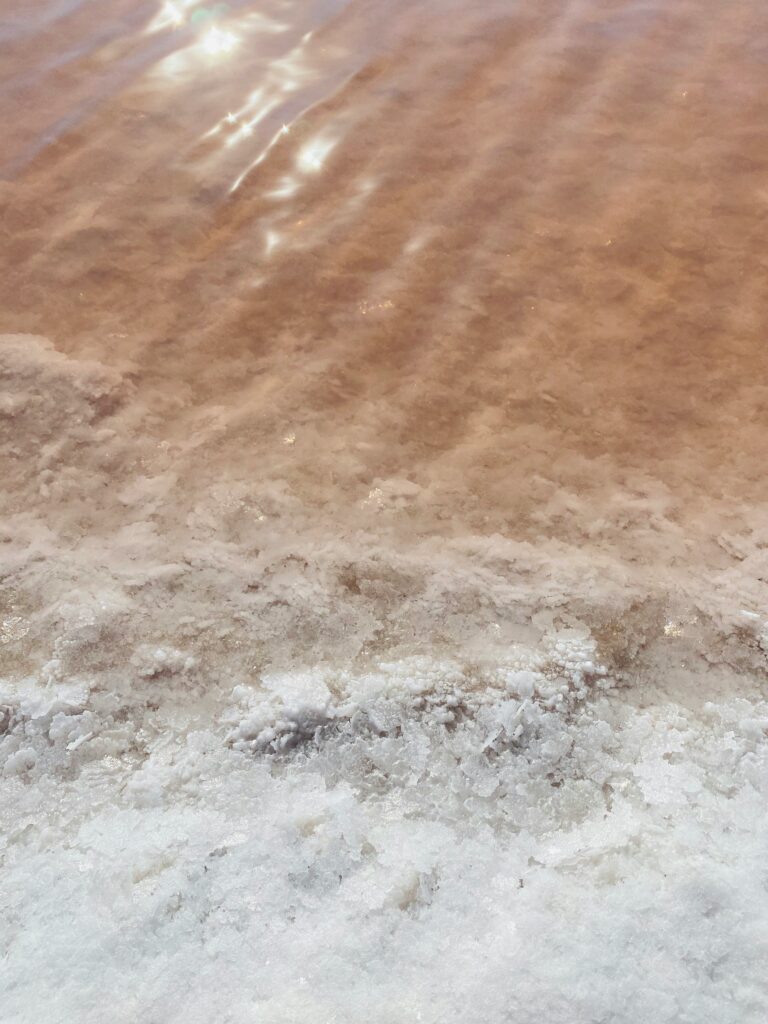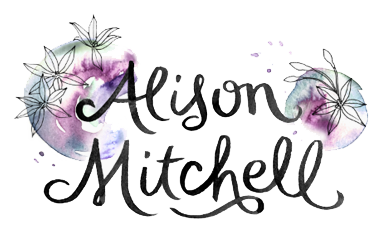Salt
Salt (sodium chloride) is a staple of every household, having been used by many cultures to flavor food for thousands of years. We have always valued salt highly, so much so it was a form of wage for Roman soldiers, known as salarium, from the Latin word for salt, sal(and hence our term for salary).
Sea salt is the result of evaporated sea water. Salt can also be mined from the earth, from salt lakes and dried ocean beds. The quality of salt varies greatly depending on where the salt is mined from (e.g. Himalayan salt is of high quality due to the pristine environment from which it is mined), and the level of refining that occurs (the less refined the salt, the better for you).
Unrefined sea salt is usually quite grey in colour and is derived directly from an ocean or sea. It is harvested through channeling ocean water into large clay trays and allowing the sun and wind to evaporate it naturally. Manufacturers of sea salt generally do not refine it much, so the salt still contains traces of other minerals. All salt, regardless of its type is generally 98% sodium chloride, with the remainder being a variety of other beneficial minerals (the less refined varieties containing up to 84 types). The more salt is processed and refined the less of these beneficial minerals remain in the salt.
When salt is taken from dry salt beds the mineral levels are reduced, most likely due to the leeching of minerals from the salt beds over time due to rain over thousands of years. When salt is taken directly from sea water this has a mineral profile similar to that of our blood, making it a better choice for our health compared to table salt [1].
Sodium is an essential electrolyte mineral, it is important for conveying energy and enabling nerve impulses and muscle contractions. In the past, salt tablets were recommended in the summer for people to replace sodium lost by exercise or heavy sweating. This is rarely recommended nowadays as we now know that it is more important to replace a combination of electrolytes, in particular potassium which is important as it helps to keep the correct balance of sodium in the body.
In our body salt has an affinity for water, so when we consume salt this causes a large percentage of sodium to settle in our vascular fluids. The sodium then attracts more and more fluid, causing an increase in pressure in the vascular system, which is one of the reasons excess salt can contribute to high blood pressure.
To prevent many of the conditions caused by excess salt consumption it is important to have adequate levels of potassium. Potassium is a mineral that resides on the inside of cells, whereas sodium dwells in the fluid outside and between our cells. When the potassium/sodium ratio is out of balance our body’s water and acid/alkaline balance become unstable and our nerves and muscles aren’t able to function properly. The majority of people in our society have a potassium to sodium ratio of less than 1:2. However the recommendation is to have a ratio greater than 5:1, which is ten times higher than average intake. A natural diet rich in fruits and vegetables can easily produce a much greater ratio, because most fruits and vegetables have a ratio of at least 50:1. Some examples include: Apples 90:1, Bananas 440: 1, Carrots 75: 1, Oranges 260:1, Potatoes 110:1. [2]
Main food sources of sodium include: Anchovies, bacon, processed meats, celery, cheeses, pickled olives, peas, pickles, table salt, tuna, salted butter, sardines, sauerkraut, pasteurized cheeses, potato chips, softened water and clams. [3]
| RDA | 0.75-3.5gm |
| Maximum recommendation: | 2.4-3.0g/day (equivalent to 6-7.5g of salt per day) |
| Deficiency limits | <0.5gm |
Salt is widely known to have an effect on blood pressure. There are some people who are very sensitive to sodium, and consuming even a small amount can cause their blood pressure to increase dramatically or to develop excess fluid retention. These people need to not only increase their potassium intake but abstain from all major sources of salt.
Unprocessed salt such as Himalayan salt will have less of an effect on your blood pressure because of its different mineral makeup which allows your body to metabolize it more effectively. [4]
Between 40-60% of people with high blood pressure are sensitive to salt. People with diabetes and chronic kidney disease and greater age also tend to be more sensitive to the blood pressure raising effects of salt. Being overweight also appears to increase susceptibility to being sensitive to sodium, and increases risk of stroke and heart attack. If people who are overweight have a diet that is high in potassium then that risk is greatly reduced. [5]
There are some other conditions which will increase your sensitivity to salt, such as Menierre’s disease. People with these types of conditions also need to be careful about their salt intake.
Some traditional health practices state that energetically, salt has grounding (descending) properties and is ‘vata’ reducing. If this is taken too far, this excessive grounding energy can cause feelings of hostility, greediness, fear and paranoia. From a traditional Chinese medicine perspective salt is beneficial for the kidneys due to its yin nature, which allows it to stimulate the kidneys, promoting fluid metabolism and promoting a moistening effect. An excess of this damages the kidneys, leading to emaciation, weakened bones and blood and deficiencies of the heart energy [1]. When looking at the traditional knowledge of salt and it’s warnings of overuse we can appreciate that it has always been known to avoid excessive salt consumption, and we now understand this is because excess salt can be damaging because it can interfere with calcium utilization and nutrient absorption, as well as contributing to fluid retention and high blood pressure.
A meta-analysis looking at the effects of long term sodium reduction of blood pressure found that on average, people with elevated blood pressure who reduced their salt intake by 4.6g/day had an average reduction of systolic blood pressure by -4.97 mmHg, and an average reduction of diastolic blood pressure by -2.74 mmHg. For people with normal blood pressure an average reduction of salt intake by 4.4g/day reduced systolic by -2.03 mmHg and diastolic by -0.99 mmHg. [6] So while we need to respect the effect that excess salt intake can have on our blood pressure we also need to realize that just reducing salt in our diet in isolation will not have a large effect.
To support healthy blood pressure, focus on both increasing potassium intake through fruit and vegetables and avoiding excessive sodium intake from added salt or processed foods (and also working on all the other necessities for a healthy cardiovascular system) rather than just reducing or avoiding salt altogether. People with salt sensitivity and cardiovascular risk factors should reduce their salt intake to less than 2g/day and only choose unprocessed salt.
Food Standards Australia-New Zealand (FSANZ) estimates that:
“Australians aged two years and older eat an average of 2,150 mg of sodium per day from an average of 5,500 mg of salt (5.5 g). About 80 per cent of this would be from processed foods and 20 per cent from salt used at the table or in home cooking. This estimate does not include the smaller amounts of sodium coming from naturally occurring sodium or sodium-containing food additives… Foods that contribute the most to Australians’ salt consumption are bread and bread rolls, meat, poultry and game products, including processed meat, and cereal products and cereal-based dishes such as biscuits and pizza.” [7]
There are many types of salt available, varying in color and texture and subtle variances in flavor. These differences are influenced by the environment from which the salt was harvested.
In an interview for ABC Radio National, salt connoisseur Alice Bell explained the differences in salt flavors:
“When it comes to getting to know your salts and learning how to match salts with foods, there are many elements to consider. A denser, drier and more compact crystal such as Kosher salt will dissolve more slowly than a lighter, moister salt such as the Murray River Flake Salt, which will have an impact of both the initial burst of saltiness and length of saltiness on the palate. When used as a finishing salt applied at the table, the colours of salt and shape of the crystals can become important, as they are able to provide excellent contrast and light. As salt acts as a natural barrier against bitterness in foods, its application can change the whole profile of a taste—oranges taste sweeter, chocolate more intense. The ability of salt to remove moisture from foods such as eggplants will in turn permit textural changes in the cooking process that result in a softer fruit. Ultimately the best way to experience, to learn, and to love salts is through trial and imagination.” [8]

Here are some tips to avoid excessive salt intake:
-
Take the salt shaker off the table
-
Gradually reduce added salt to foods so that you can learn to enjoy the flavours of unsalted foods.
-
Try flavouring foods with herbs, spices, and lemon juice.
-
Choose low-salt products when available.
-
Read food labels carefully to determine the amounts of sodium and learn to recognize ingredients that contain sodium a food with salt, soy sauce, salt brine, or any ingredient with sodium, such as monosodium glutamate, or baking soda (sodium bicarbonate) as part of its name contains sodium.
-
In reading labels and menus, look for words that signal a high sodium content, such as barbecued, broth, marinated, Parmesan, pickled, smoke and tomato base.
-
Prepared sauces and condiments are often high in sodium; these include barbecue sauce, cocktail sauce, mustard sauce, soy sauce, teriyaki sauce as well as many salad dressings.
-
Don’t eat canned foods as these are often high in sodium.
-
Serve lemon wedges at the table instead of salt which can be a good flavor enhancer because of its acidity.
-
Use a salt free dukkah to sprinkle onto veggies or coat meats with. This imparts good flavor and crunch.
Summary Points:
-
Salt has always been a staple of our diets, whether taken from the sea or mined from the earth, from salt lakes or dried ocean beds.
-
Traditional Chinese and Ayurvedic medicine have always advised against excessive salt consumption, and this is backed up with modern scientific evidence. In moderate and balanced amounts salt is beneficial for our health.
-
Salt is essential for our health so shouldn’t be avoided altogether, moderation is key. However some people are very sensitive to salt, and they need to avoid it as much as possible.
-
For people who aren’t salt sensitive, problems arise if their sodium: potassium ratio is out of balance, therefore ensuring you have plenty of potassium is beneficial.
-
Avoid processed foods as they contain too much salt. This is the main source of salt in the standard diet.
-
Choose salt which has minimal processing, such as Celtic sea salt or Himalayan salt.
Works Cited
[1] P. Pitchford, Healing with Whole Foods, 3rd Edition ed., Berkeley, California: North Atlantic Books, 2002.
[2] M. Murray, J. Pizzorno and L. Pizzorno, The Encylopedia of Healing Foods, New York: Atria Books, 2005.
[3] H. Osiecki, The Nutrient Bible, 7th ed., Eagle Farm: Bio Concepts Publishing.
[4] J. M. Mercola, “Mercola.com,” 25 August 2010. [Online]. Available: http://articles.mercola.com/sites/articles/archive/2010/08/25/why-has-this-lifesustaining-essential-nutrient-been-vilified-by-doctors.aspx. [Accessed 2013].
[5] J. He, L. G. Ogden, S. Vupputuri, L. A. Bazzano, C. Loria and P. K. Whelton, “Dietary sodium intake and subsequent risk of cardiovascular disease in overweight adults.,” The Journal of the American Medical Association, vol. 282, no. 21, pp. 2027-34, 1999.
[6] F. J. He and G. A. MacGregor, “Effect of longer-term modest salt reduction on blood pressure,” The Cochrane Database of Systemic Reviews, vol. 3, no. CD004937, 2004.
[7] FSANZ, “Sodium and salt,” August 2011. [Online]. Available: http://www.foodstandards.gov.au/scienceandeducation/factsheets/factsheets/sodiumandsalt.cfm. [Accessed 12 February 2013].











Pingback: google